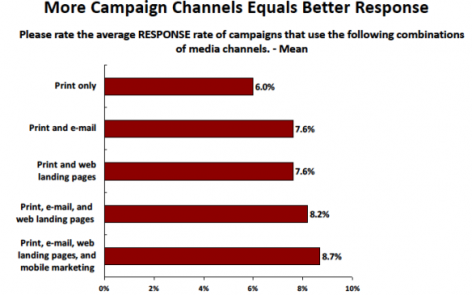The thing that makes targeting Hispanic consumers a bit tricky is not that they are vastly different from other segments, it’s that sometimes the cultural nuances are hard to put into words. You often hear, “Hispanics consider family to be extremely important.” Well, that’s the case for all segments. But it’s how this sentiment is executed that defines whether advertising will work or not.
Take insurance, for example. Both General Market and Hispanic consumers recognize its value. But, whereas the General Market views insurance as a way to protect their financial assets, Hispanics view it as way to protect their families. Ah, well, General Market consumers also want to protect their families— and assuring their financial well-being helps protect their families. Very true. And it’d be perfectly okay to go that route. But for Hispanics, “well-being” is more of an emotional concept than an analytical one.

Here are a few things to consider when developing creative for this “emotional” target.
- BRAND POSITIONING: Most decisions are going to be based on how the decision makes the person feel. For example, dad will choose a bank primarily because he feels welcomed there, not because it offers him better rates. Mom will choose a kid’s cereal primarily because it makes her kids happy, not because it’s good for them. Notice that I wrote “primarily.” Rational benefits are important as well, but they’ll usually be secondary to the emotional ones. Therefore, positioning a product or service as satisfying an emotion will help build a stronger, more relatable brand.
- MESSAGING: Copy should be simple, educational, casual and respectful. Don’t overwhelm with too much information. While Hispanic consumers aren’t as jaded by all the advertising out there as the General Market, TMI does apply. Be mindful of what is important to Hispanics about a product or service. The required information may be the same for a General Market consumer as for the Hispanic, but the order in which it’s presented may need to change. Consider this: advertising is full of “friends and family” messages; well, for Hispanics it’s more appropriate to say “family and friends.” It’s a small difference that suggests one marketer knows the Hispanic consumer, the other one just translated their English copy. And, one more thing—just because it’s Hispanic doesn’t mean it has to be in Spanish. Sometimes English-language executions with the right Hispanic cues can be more effective than Spanish-language ones.
- LOOK & FEEL: The famous “look and feel.” It’s true, Hispanics like color. But, don’t go overboard. Bright, cheerful, tasteful material that is visually easy to follow is great. Oh, and don’t think that everything has to have mariachi or salsa music. Within the Hispanic population there are different groups, each one with its own tastes and preferences. Plus, the execution should be in sync with the product or service, i.e., piñatas and a mariachi band need to make sense with your product.
• Here’s a prime example: Little Caesars has an English-language commercial with a mambo act. As a bilingual, bicultural Hispanic I find it so ridiculous, it’s almost offensive. A mambo act and pizza—what’s the connection? I know they meant it to be funny, but, I beg to differ.
- HISPANICS ARE “PEOPLE” PEOPLE: The human element is huge. A photo of a family get-together may seem stereotypical and overused, but it certainly has more impact than an icon or an illustration/graphic. Besides, there are many beautiful, creative ways to add the human element without resorting to a typical “family at dinner” shot. Community is also important. Making Hispanics feel that they are a welcome part of society goes a long way.
Marketing success starts with knowing your audience. Understanding the nuances of the Hispanic market can help you achieve your goals.




